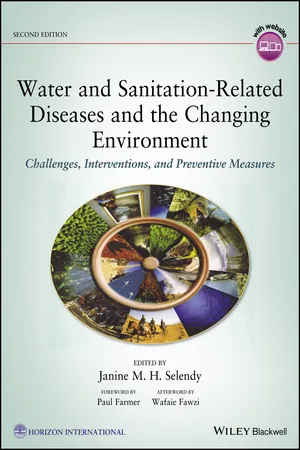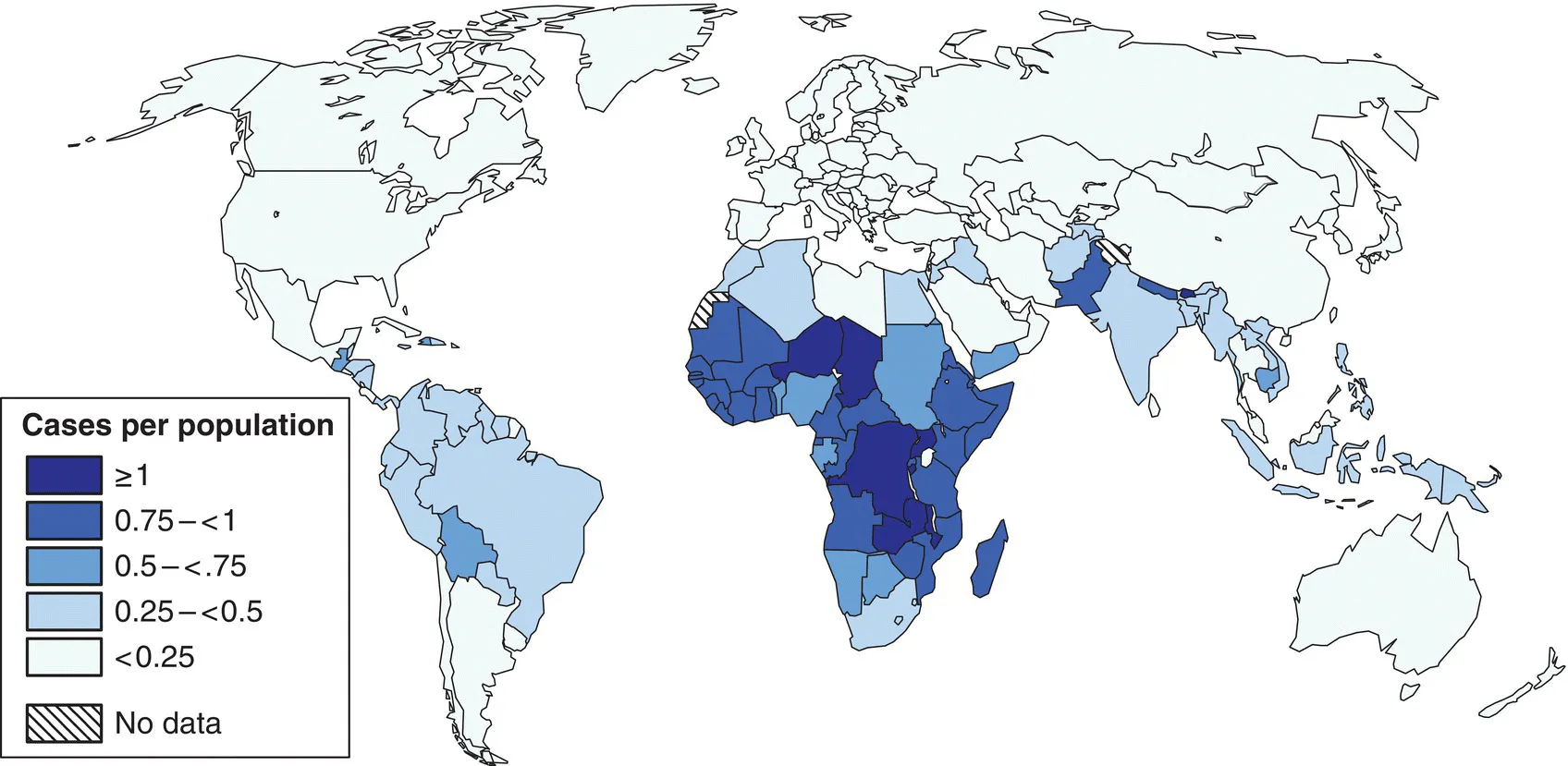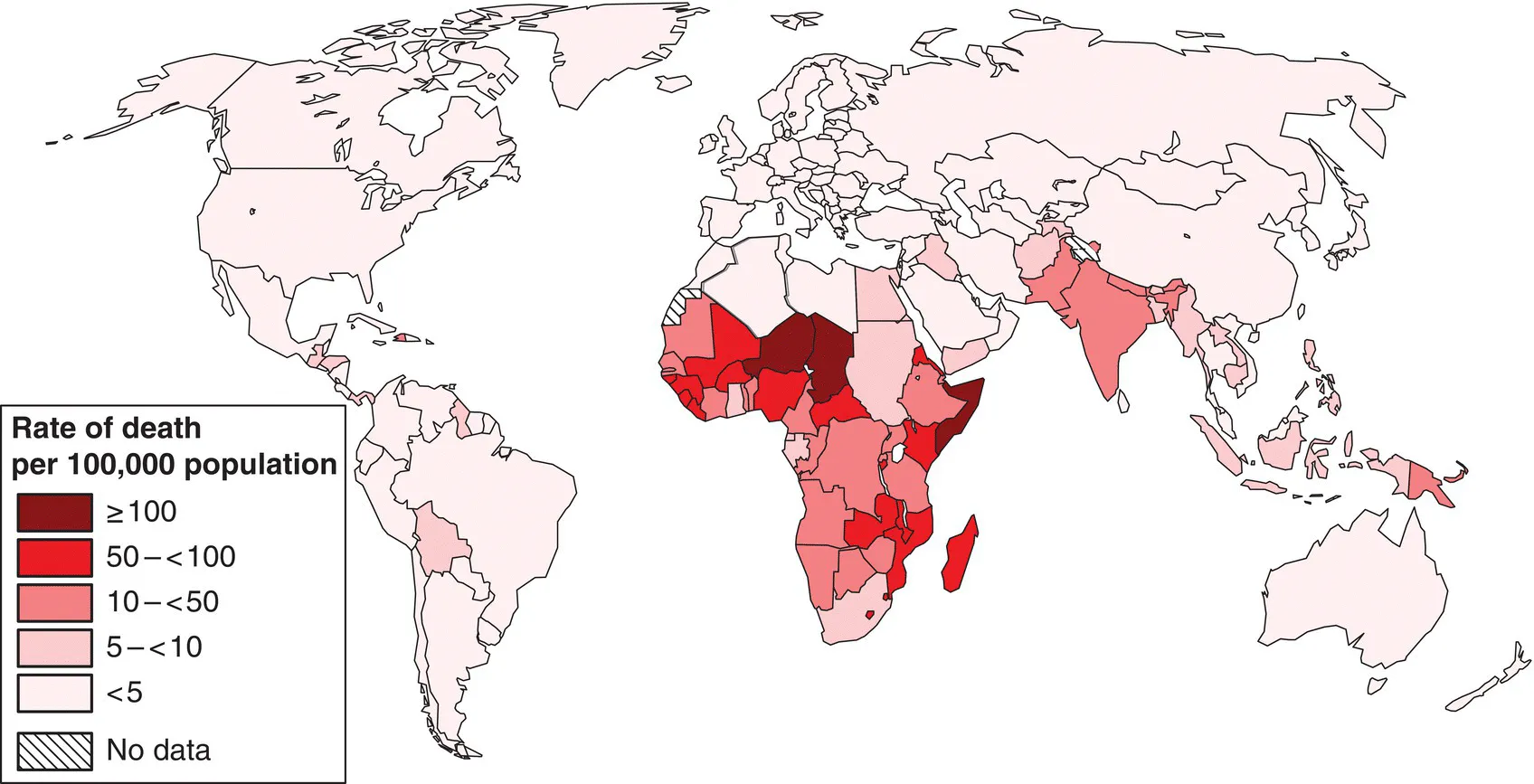
Water and Sanitation-Related Diseases and the Changing Environment
Challenges, Interventions, and Preventive Measures
- English
- ePUB (mobile friendly)
- Available on iOS & Android
Water and Sanitation-Related Diseases and the Changing Environment
Challenges, Interventions, and Preventive Measures
About this book
The revised and updated second edition of Water and Sanitation Related Diseases and the Changing Environment offers an interdisciplinary guide to the conditions responsible for water and sanitation related diseases. The authors discuss the pathogens, vectors, and their biology, morbidity and mortality that result from a lack of safe water and sanitation. The text also explores the distribution of these diseases and the conditions that must be met to reduce or eradicate them. The text includes contributions from authorities from the fields of climate change, epidemiology, environmental health, environmental engineering, global health, medicine, medical anthropology, nutrition, population, and public health. Covers the causes of individual diseases with basic information about the diseases and data on the distribution, prevalence, and incidence as well as interconnected factors such as environmental factors. The authors cover access to and maintenance of clean water, and guidelines for the safe use of wastewater, excreta, and grey water, plus examples of solutions. Written for students, and professionals in infectious disease, public health and medicine, chemical and environmental engineering, and international affairs, the second edition of Water and Sanitation Related Diseases and the Changing Environment isa comprehensive resource to the conditions responsible for water and sanitation related diseases.
Frequently asked questions
- Essential is ideal for learners and professionals who enjoy exploring a wide range of subjects. Access the Essential Library with 800,000+ trusted titles and best-sellers across business, personal growth, and the humanities. Includes unlimited reading time and Standard Read Aloud voice.
- Complete: Perfect for advanced learners and researchers needing full, unrestricted access. Unlock 1.4M+ books across hundreds of subjects, including academic and specialized titles. The Complete Plan also includes advanced features like Premium Read Aloud and Research Assistant.
Please note we cannot support devices running on iOS 13 and Android 7 or earlier. Learn more about using the app.
Information
SECTION II
WATER AND SANITATION‐RELATED DISEASES
7
INFECTIOUS DIARRHEA
7.1 INTRODUCTION
7.2 EPIDEMIOLOGY
| Age group (years) | Deaths | Deaths (per 100 000) | Cases (millions) | Cases (per person) |
| 0–4 | 498 641 | 74.7 | 955 | 1.43 |
| 5–14 | 51 611 | 4.2 | 394 | 0.32 |
| 15–49 | 171 438 | 4.6 | 679 | 0.18 |
| 50–69 | 223 527 | 18.1 | 213 | 0.17 |
| >70 | 365 762 | 93.8 | 145 | 0.37 |
| Income group | Deaths (total) | Deaths (per 100 000) | Cases (millions) | Cases (per person) |
| High | 26 481 | 2.2 | 21 | 0.02 |
| Upper middle | 57 123 | 2.2 | 364 | 0.14 |
| Lower middle | 890 597 | 30.4 | 1454 | 0.50 |
| Lower | 336 779 | 55.4 | 546 | 0.90 |
| Global | 1 310 980 | 18.0 | 2386 | 0.33 |


Table of contents
- Cover
- Table of Contents
- FOREWORD
- PREFACE
- INTRODUCTION
- SECTION I: WATER, SANITATION, AND HYGIENE: MEETING THE NEED
- SECTION II: WATER AND SANITATION‐RELATED DISEASES
- SECTION III: ANTHROPOGENIC AND NATURALLY OCCURRING POLLUTANTS
- SECTION IV: WATER TREATMENT AND SAFE STORAGE
- SECTION V: CLIMATE CHANGE AND HUMAN HEALTH
- SECTION VI: SUCCESS STORIES
- AFTERWORD
- INDEX
- End User License Agreement